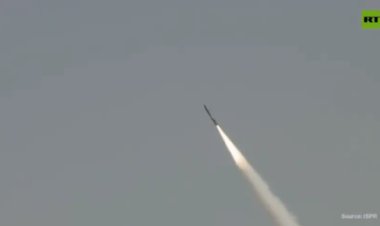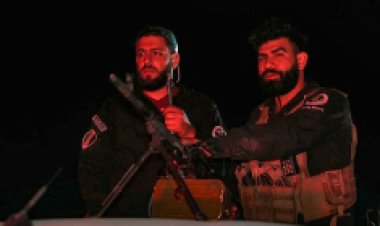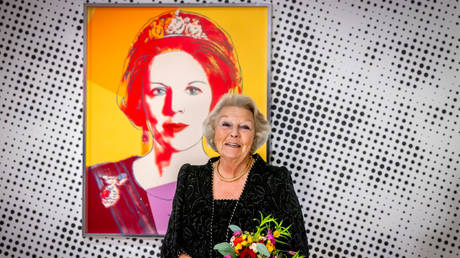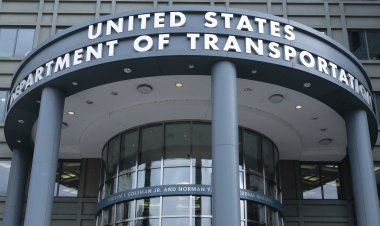SpaceX Scheduled to Bring Back Boeing's Starliner Astronauts from Space Next Year
NASA officials announced on Saturday that two astronauts who traveled to the International Space Station in June using Boeing's flawed Starliner capsule will instead return to Earth aboard a SpaceX vehicle early next year. They determined that problems with Starliner's propulsion system made it too hazardous to safely transport its first crew back home as originally intended.

Veteran NASA astronauts Butch Wilmore and Suni Williams, both with backgrounds as military test pilots, made history on June 5 as the first crew to journey aboard Starliner for what was intended to be an eight-day test mission to the ISS.
However, shortly after launch, Starliner's propulsion system experienced several glitches within the first 24 hours of flight, resulting in the astronauts remaining on the station for 79 days while Boeing addressed the concerns.
During a news conference in Houston, NASA officials reassured reporters that Wilmore and Williams are safe and ready to extend their stay. The astronauts will utilize this additional time to conduct scientific experiments alongside the seven other crew members currently aboard the station, NASA noted.
In an unusual shift in NASA’s astronaut operations, the astronauts are now slated to return in February 2025 on a SpaceX Crew Dragon spacecraft, which is scheduled for launch next month as part of a routine rotation mission. Two of the Crew Dragon's four seats will be left vacant for Wilmore and Williams.
This decision, which involves bringing the astronauts home using Boeing's key competitor, marks one of NASA's more significant choices in recent years. Boeing had been optimistic that the Starliner test mission would help restore confidence in the troubled program, which has faced years of developmental challenges and over $1.6 billion in budget overruns since 2016.
During the flight, five of Starliner's 28 thrusters malfunctioned, and multiple helium leaks occurred, essential for pressurizing the thrusters. Despite these issues, the capsule successfully docked with the ISS, a massive laboratory in orbit that has supported rotating crews of astronauts for over 20 years.
NASA announced that Starliner would undock from the ISS without crew involvement in "early September." The spacecraft will attempt an autonomous return to Earth, deviating from a primary test objective that involved having a crew present to oversee the process.
"I know this is not the decision we had hoped for, but we stand ready to carry out the actions necessary to support NASA's decision," said Boeing's Starliner chief Mark Nappi in an email to employees.
"The focus remains first and foremost on ensuring the safety of the crew and spacecraft," Nappi added.
The decision was made during a meeting on Saturday morning in Houston that included several senior NASA officials and Boeing representatives.
NASA's space operations chief, Ken Bowersox, indicated that the agency officials unanimously chose Crew Dragon for the astronauts' return. Boeing, on the other hand, advocated for Starliner, asserting its safety.
NASA Administrator Bill Nelson remarked during a news conference that he had spoken with Boeing's new CEO Kelly Ortberg and felt confident that the company would persist with the Starliner program. He expressed he was "100 percent" certain that the spacecraft would carry another crew in the future.
"He expressed to me an intention that they will continue to work the problems once Starliner is back safely," Nelson shared about his conversation with Ortberg.
Boeing has faced significant challenges developing Starliner, a capsule intended to compete with Crew Dragon as a second U.S. option for transporting astronaut crews to and from orbit. The company is also dealing with quality control issues in the production of its commercial airplanes, which are crucial to its business.
Starliner had a disappointing outcome during a 2019 uncrewed test launch to the ISS but managed to achieve mostly positive results in a 2022 redo, although it faced thruster issues again. The June mission with its first crew was necessary for NASA to certify the capsule for routine flights; however, the path to Starliner's crew certification is now in doubt.
The extended mission has incurred a cost of $125 million for Boeing, as indicated in securities filings. The company conducted tests and simulations on Earth to gather data, aiming to assuage NASA's concerns regarding Starliner's safety for crewed travel.
Yet, the outcomes from that testing raised further engineering challenges and ultimately did not satisfy NASA officials' worries about Starliner's thrusters and the complexities of a crewed return trip, considered the most daunting aspect of the test mission.
"There was just too much uncertainty in the prediction of the thrusters," noted NASA's commercial crew program chief Steve Stich.
Starliner's now-uncertain trajectory toward obtaining a long-desired NASA certification is an additional challenge for Ortberg, who began this month aiming to restore the reputation of the planemaker after a significant incident involving a door panel detaching from a 737 MAX passenger jet during flight in January.
Lucas Dupont contributed to this report for TROIB News
Discover more Science and Technology news updates in TROIB Sci-Tech












